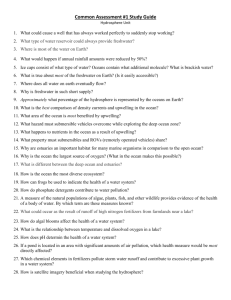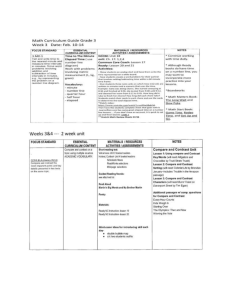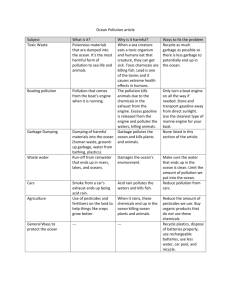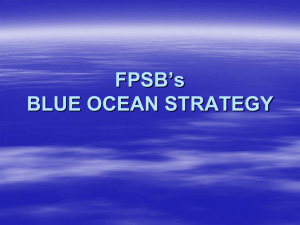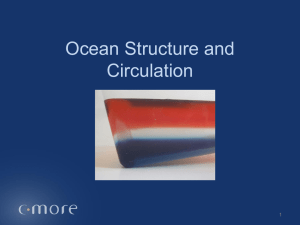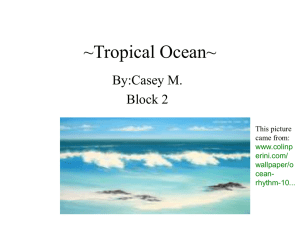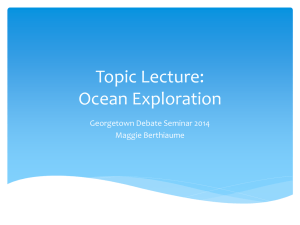What resources are found in the ocean?
advertisement
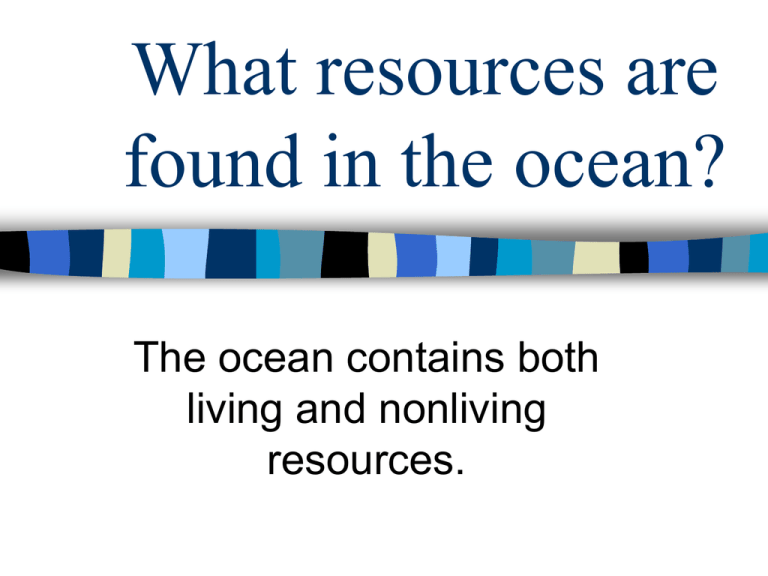
What resources are found in the ocean? The ocean contains both living and nonliving resources. The ocean supports living resources. Most of the fish caught are harvested from coastal waters or areas of upwelling. Over fishing: catching fish faster than they can naturally reproduce. By-catch: portion of animals that are caught in a net and then thrown away as unwanted. Ex) Dolphins Living Organisms Aquaculture: farming of saltwater and freshwater organisms. Saltwater farmers may raise fish, oysters, mussels, shrimp, or seaweed. Organisms are harvested for purposes other than food. Algae: used in detergents, shampoo, cosmetics,ice cream. Diatoms: used in paints and abrasives. The ocean contains nonliving resources. Some nonliving resources include water, fuels, and minerals. Water: Desalination (removing salt from the water) provides fresh water to many dry areas and islands. Most of the freshwater in Saudi Arabia and the Middle East is obtained this way. Fuels Oil forms from the remains of living things. Oil and gas deposits are found near the shore along the continental shelf. Pumped from every continent except Antarctica. Minerals and Rocks Minerals are solid substances that are obtained from the ground and the water. Nodules: lumps of minerals that are found scattered across the deep ocean floor. Minerals obtained from the ocean: magnesium, salt, gold, manganese, iron, cobalt, sand, and gravel. Ocean Pollution Although some ocean pollution is the result of natural occurrences, most pollution is the result of human activities. Causes of Pollution Natural Occurrences: weather. Ex) Heavy rains add freshwater lowering salinity. Human Activities:sewage, chemicals, and trash dumped into waters. Run-off from fields. Oil pollution from tankers or damaged oil drilling platforms. Protecting the Ocean The ocean is a continuous body of water with no boundaries. It is difficult to determine who, if anyone, should control portions of it. The UN has established that the 1st 22 Km from shore is owned by the country that borders it. This leaves about ½ the ocean as the “high seas” owned by no nation.

